May 25th, 2024
In the previous post, I bought Dance Summit 2001. The manual for the game advertises the single that featured Akai Hoshi, which was used in the game. The single was coincidentally also for sale on Mercari so I bought it.
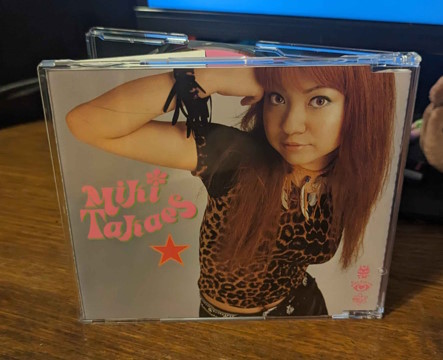
I think this CD has her entire discography. I never seen her credited for anything else.
This is the only single that released from her, not including soundtracks. Pretty weird that she logged on, made good music then vanished. Maybe it didn't do good enough? Maybe she was tired of the process? Who knows and cares?
Akai Hoshi
Akai Hoshi is the best track from Dance Summit 2001! The song is awesome! It's very bouncy. If you haven't listened to it in full, the version on this CD is pretty much identical to the one on the soundtrack release. For anyone wondering, this CD also doesn't contain any of the remixes.
Akai Hoshi (Instrumental)
I wanted this CD for Akai Hoshi's instrumental. This is a full instrumental, removing even the background vocals too.
Outside of Akai Hoshi, the only other song in Dance Summit 2001 that I know has an official instrumental version is Disco Estrus' song. The group behind the song released an instrumental on their site in very low quality. It's 260KB in size, mono, and 11025hz. You gotta love it.
Tsuioku ~Only Eternity~
This second track was used as the ending theme to Platinumhugen Ordian. Something I find very interesting is that ABYSS also did the ending song before Miki! Eien no Remake was sung by ABYSS and avaliable on the anime's first OST. What a very strange connection.
Leave Me Alone
The final track was also pretty good. Unlike the other two, this seems written for this release. She sounds magnificient in this song! It could rival some of ABYSS's songs, I fear.
In the end, this release was really good! I think the money was well spent. A lot of my plays were for Akai Hoshi, of course.
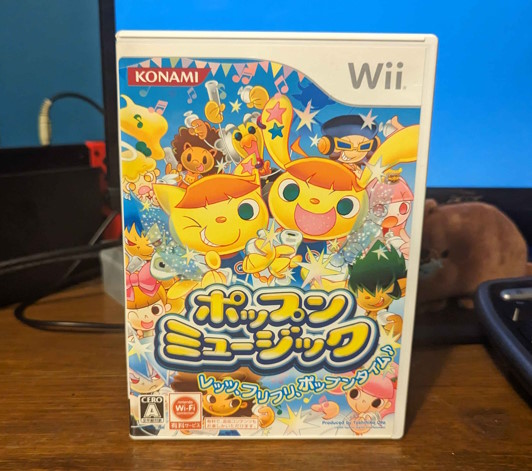
Here's my second Japanese Wii import. It's pop'n music for the Wii.
MISS 001
This entry is more of a spin-off rather than a home release of an arcade title. It's notable for being the second time the pop'n music franchise has tried to leave Asia, but also infamous for still not being completely like pop'n music. Being a Wii game, it's controls were fit to the Wii Remote.
I do like the song selection. Aya Matsuura's Yeah! Meccha Holiday is a default in this game. I wish the song crossovered into the main games, since there's not a lot of Hello Project songs in BEMANI.
The game does have DLC which adds more BEMANI music. It was 100 Wii Points for 2 songs in a set of 1. Of course, the Wii Shop Channel doesn't allow you to make new purchases anymore, so I have to install WADs. The WADs avaliable are really huge though, around 40MB!
This game is pretty alright if you look past the fact that it's a neturued pop'n music game. It works okay and the song selection isn't the worst. If you wanted a genuine pop'n music experience, you'd probably not even look at the Wii. Nobody looks at the Wii for serious games.
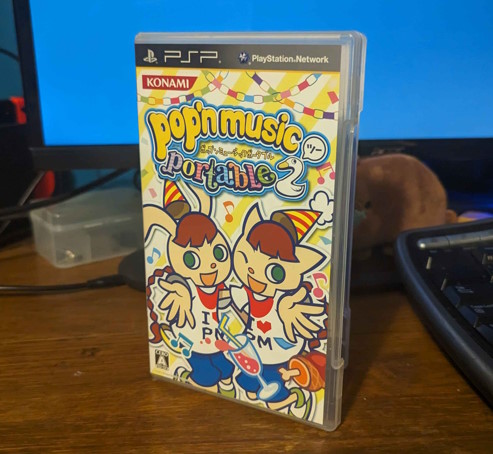
You'd probably be looking at the PSP. This is pop'n music portable 2, the sequel to the portable game from the previous year. This was the last PSP pop'n music game released and also the last CS pop'n music game to keep the core gameplay. The next CS game that would feature said gameplay would be Lively, almost 10 years later.
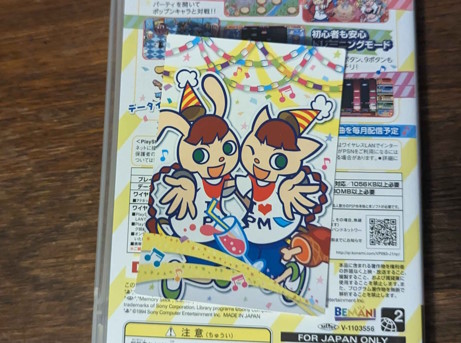
When I saw the listing, I thought it came with a pop'n music card as fantasia and the collectible cards were in service when this game was out, but it turns out it was a DLC code! If you got the game during the inital run, you got 20 extra songs. The DLC code on physical copies expired on November 2012, so I couldn't use this if it was unused. The DLC is easy to pirate anyways.
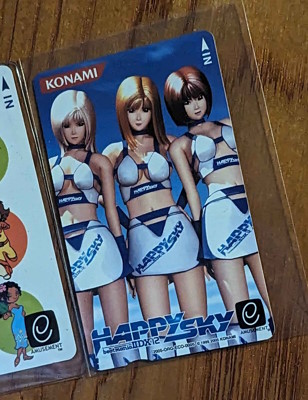
Another e-amusement card arrived. I believe this is from the CS release of Happy Sky. Of course, being the old magnetic type, these don't work on modern machines. A bit lame that new unique e-amusement passes are usually lottery only...
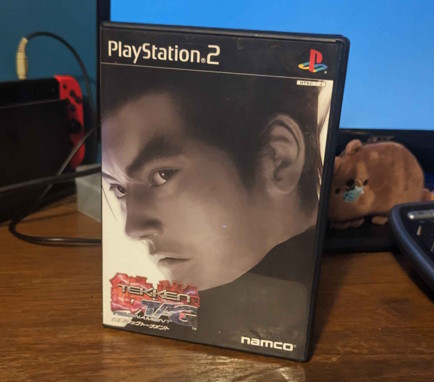
Tekken Tag Tournament arrived! It was a near launch title, so it goes for nothing, like every Tekken game! I think this was 1 yen and nobody really cares for these games. It's a little funny to think how this is an enhanced port of the Namco System 12 game, but it blows that out of newer graphics than the title running on PS1 hardware.
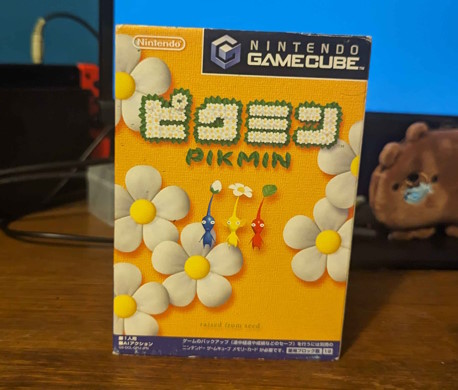
I also won Pikmin on GameCube. I never played a Pikmin game before and my only exposure to it was watching the trailer on Luigi's Mansion when I was young. I thought it was a farming game back then.
I played this game on the GameCube I won on Yahoo Auctions. There weren't any hiccups so far, but I'm still a bit skeptical. I streamed the game to a couple of friends and I had a lot of fun mixed with extreme panic. It's a difficult game.
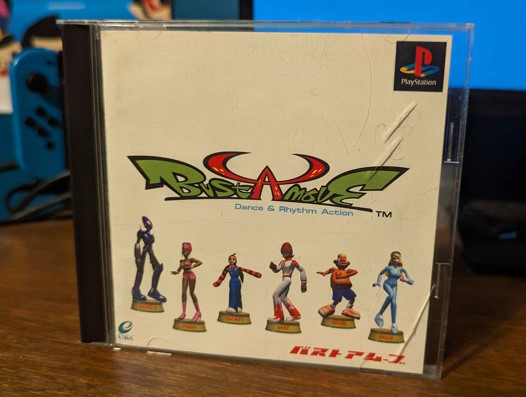
Bust-a-Move arrived! I bought the first one around the time I got Dance Summit 2001 back in April. This is my first PS1 game in this case which doesn't have a clear spine. I thought it was a replacement case, but a lot of games have this specific case, so I guess it's a cheaper case to manufacture.
Playthrough of the entire game.
This is a very fun game! It's pretty simple and different from Dance Summit 2001. It's just replicating the commands on the screen and pressing the final input on the fourth beat. It's very addicting! The music is just terrific, so much so that I want to get the soundtrack.
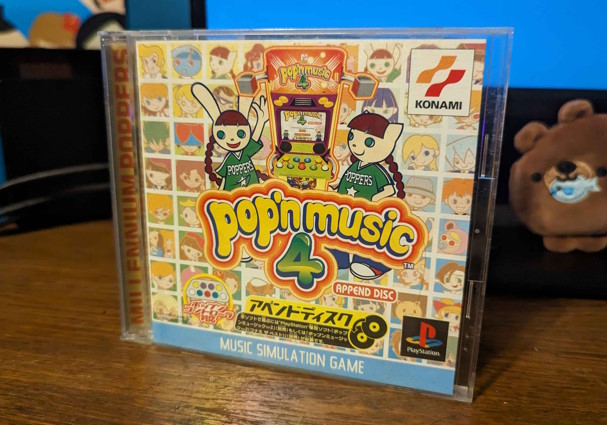
Next is the pop'n music 4 append disc. This is my first BEMANI append disc.
Append discs were a way of adding new songs to BEMANI games without releasing a whole new game, basically expansion packs. This had the benefit of being cheaper than the regular games, but you needed to own one of the series' key discs to play it.
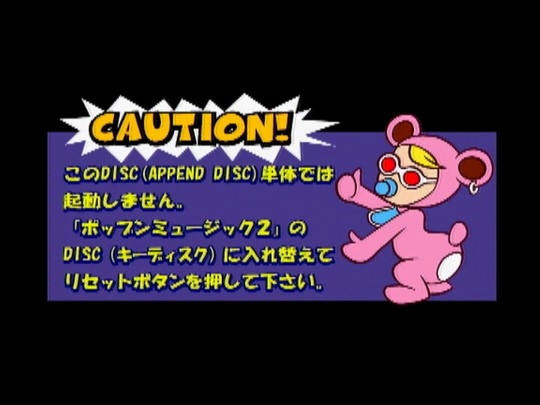
"This disc cannot be started by itself. Please put in Pop'n Music 2's disc (KEY DISC) and press the RESET button."
Since you need to own a key disc to play it, putting it into the console without one will show an error. For pop'n music, you can use 2, 5 or 6 as key discs. You can't use any of the PS2 or spin-off games as key discs. Thankfully, pop'n music 2 is really cheap and there's no incompatibilites to make note of.
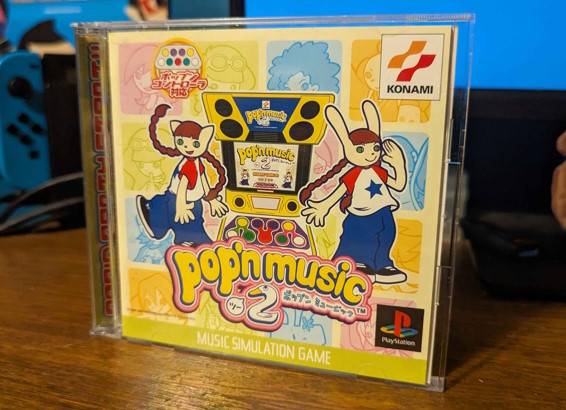
At the time of pop'n music 4's arrival, I didn't get pop'n music 2 yet. It arrived a week later and I could finally play it! This game is the first pop'n music key disc and is the cheapest out there.

In the main menu, we'll have to select DISC CHANGE and swap the disc to pop'n music 4. The game will now load into pop'n music 4 and the interface changes accordingly! The game will also create a new save file for the new title.
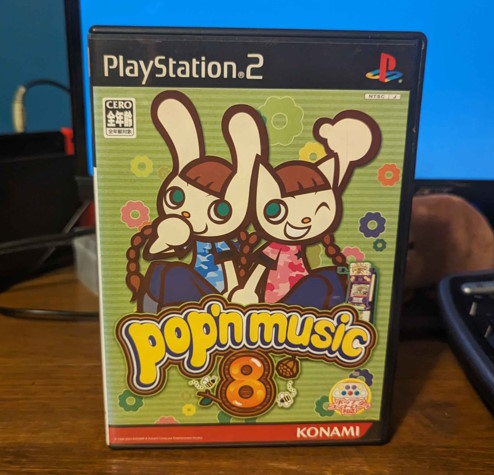
I finally got pop'n music 8! For some reason, almost every copy of pop'n music 8 on YAJ was in terrible condition. I had to rely on a seller I frequent to list it for a copy in good condition.
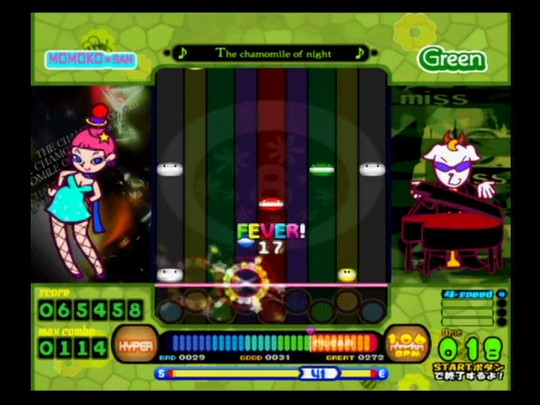
This was the last pop'n music game to be ported from the old Konami Firebeat system. From pop'n music 9 and later, they used a PS2 with a hard drive and a FireWire I/O up until FEVER, which was the last game before they switched to PC. You can tell by putting 7 and 8 side-by-side, 8 just looks better.
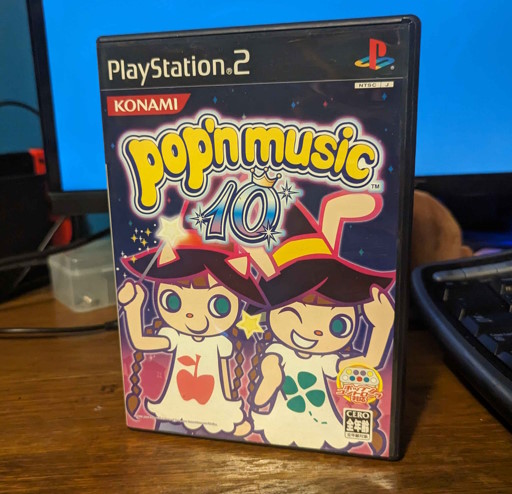
There's also pop'n music 10, which I bought from Mercari. This marks my fourth pop'n music PS2 title, a little less than half of all pop'n music games. Foxy debuts in this game, so it's the superior pop'n music game.
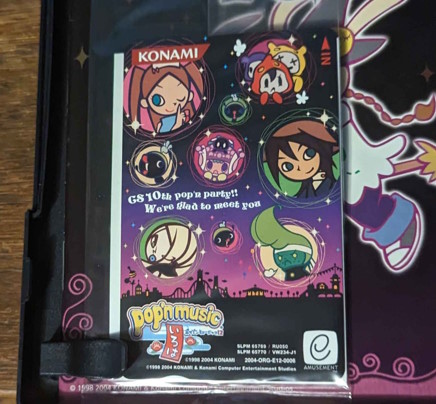
One thing the seller didn't mention was the fact that it actually came with the e-amusement card! It's still in the wrapper too. Iroha was in service when 10 hit consoles, which explains the Iroha branding. I'm not gonna rip it out of it's plastic wrapper though, that was a job for someone else and they didn't do it. It's staying in there.
This felt like a bad play.
As of now, I have almost all of the pop'n music games on PS2. I'm missing everything past 10 though, but I'll eventually get all of them, especially since pop'n music games aren't that expensive.
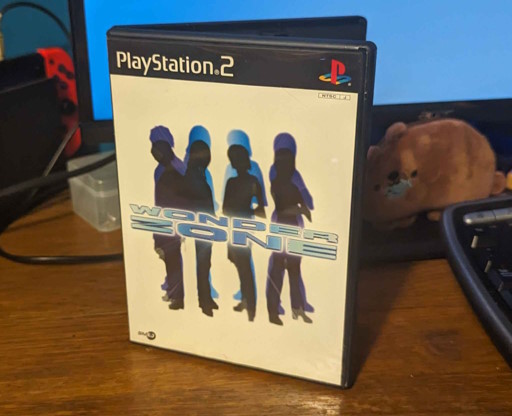
Amongst the PS2 games that arrived with pop'n music 2 and 4 was WONDER ZONE. This is another title that uses Fourth View and was the last based on a music group. This game focuses on ZONE, a band idol group that was already rising in popularity around the time of release. This is my first Japanese dual-layer game.
This video got blocked... only in Russia.
If you remember the Space Venus featuring Morning Musume game, this is similar to that. There's a 360-degree video as well as other videos you can unlock by playing the game. There's also an additional game which let you edit angles and effects in one video. It's pretty cool for the PS2.
The major reason I got the game is because, unlike Space Venus, this has a rhythm game! It looks so awesome! The wireframe background and the paper FMV cutouts are so cool! I love the paper cutouts, it's something that feels so PS2.
One major setback of the rhythm game is that there is a songlist of one song, GOOD DAYS. It's a great song, but having only one song in a game about a specific band that had 4 singles out at this point is a little absurd.
After this, there were only 4 more Fourth View games released. A train-sim which used real-life train video for graphics and 3 gravure games. The gravure games pretty expensive, costing around $70 USD per title. I would import them as a joke but I don't know if my proxy would be too happy with that.
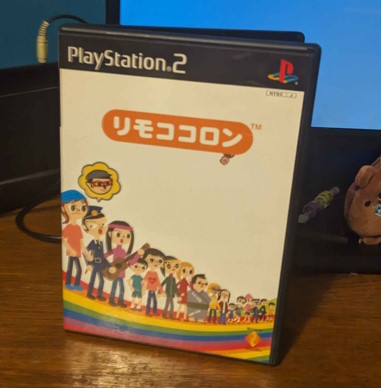
The next PS2 game is Rimokokoron. I've always seen this game for 1 yen and I decided to buy it cause it looked sweet. I was a little worried since the game requires reading, but the kanji featured are pretty low-level, so it was easy to play.
The premise of the game is rather simple. Every scenario have people with their own problems. You'll have to go around the map and help them find a solution. You clear each stage by completing enough solutions with the right answer.

For example, in the campsite stage, there is a family setting up their campfire. They came unprepared and need parts to build the fire. First, the dad dad needs some stones. You go around the stage to find some, capture an image and project it to the dad. He'll run off to the stones and pick them up.

Afterwards, they'll need sticks. You'll have to go further out and find two piles of sticks to use as firewood. For every pile, you'll take a picture and project it onto the son, who'll collect them. Afterwards, the son will light up the fire and now it's time to eat!
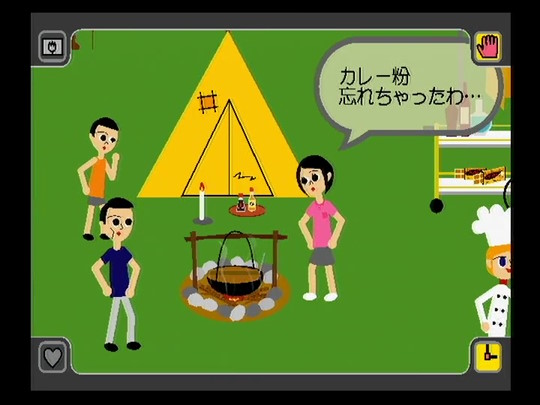
Only problem though, they can't find their curry mix. There are two solutions to this: You can take the seasonings, which the mother will make meat and potatoes instead, or take the neighbor's curry mix. If you take the seasonings, they'll be content with the meal change. If you take the neighbor's curry mix, you'll create a rare problem for the neighbors!
Showcase of the Amusement Park level.
If you're a fan of the artstyle, the work was done by Kenichi Nakane, who has produced various vintage-styled works similar to Rimokokoron. He's more well-known for his work on IQ Suppli, a Fuji Television quiz show where he has drawn characters for some of the problems presented on the show. I recommend checking out his portfolio site!
Despite how short the game is (5 stages), it was really fun. Each stage has 50+ solutions, some requiring other problems to be solved or unsolved. I really want to recommend this game to people, but it's in Japanese, so it's a little difficult to do so. If you can read basic Japanese with some kanji, you might have an easy time with this game!
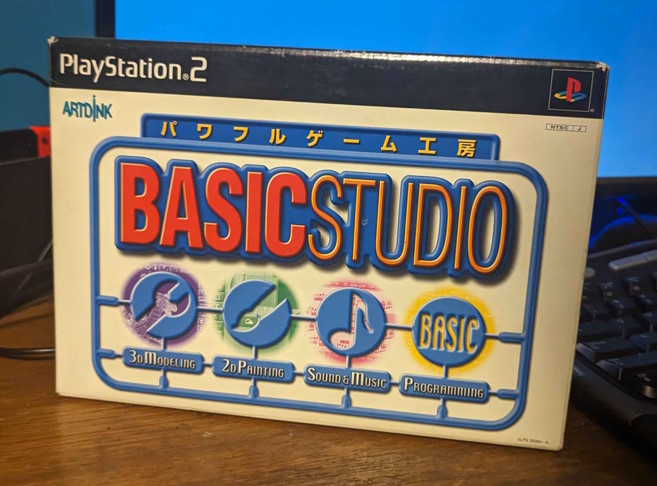
I bought this copy of Powerful Game Maker: BASIC STUDIO. This software is a software creation package that centers around BASIC programming, similar to Yabasic or SmileBASIC. As you can see on the box, there are also tools for 3D modeling, 2D graphics, and a sound composer.
The game comes in a large box as it comes with 3 seperate manuals. One is how to use the included software, another is a programming reference guide and the last is an introduction manga to BASIC programming. I'm familar with how BASIC works, so I don't need to really read it.
The game comes with two discs, the STUDIO disc and the PLAY disc. The STUDIO disc is where all the tools reside and is where you do all the game making. The PLAY disc lacks all the tools and is meant to be lent to other people with a memory card containing your programs so they can play them. There's no need to swap between the two when making programs.
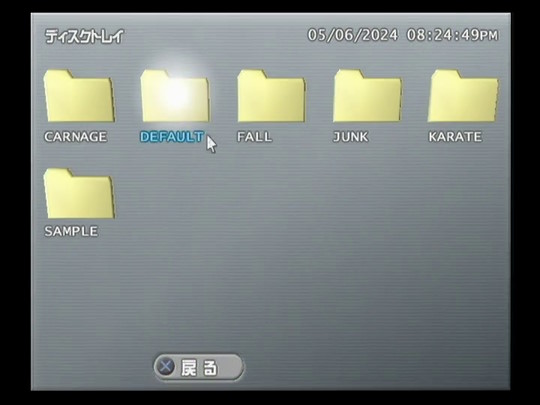
First tool in the STUDIO disc is the file explorer. This is where you manage data from your memory card and copy samples from the disc. In the PLAY DISC, this is the only thing that is accessible. Nothing else to say here except that the interface is a little bit like the PS2 browser.
Second tool is the BASIC interpreter, which is where the programming happens. If you've used something like a Commodore 64 or an Apple II, this is exactly like that. If you want to add a line to your program, you put in the line number and then the line's data.
While this software blesses us with USB keyboard and mouse support, it's important to note that this does not use the QWERTY layout, but rather, uses the Japanese JIS layout. The alphanumeric positions are the same, most of the symbols are in different places. All keyboards are assumed this layout so you have to get used to it. You are also able to use a software keyboard and mouse, but for programming? Get real.
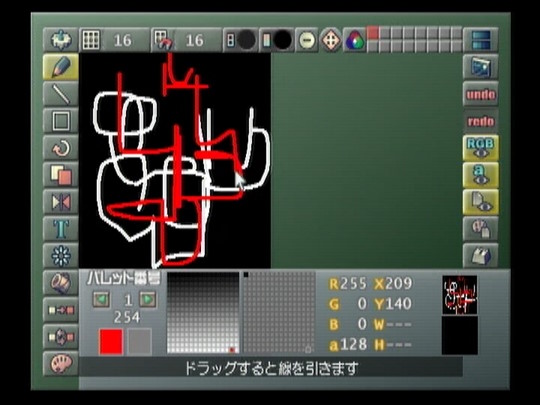
Next is the 2D image editor. Here, you draw graphics and their associated palettes for your program.
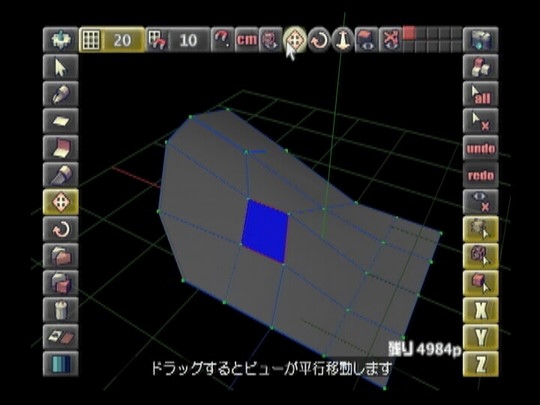
Next is the 3D modeler. You can make models with this and texture them with data from the 2D image editor. There's a good amount of options avaliable in this tool!
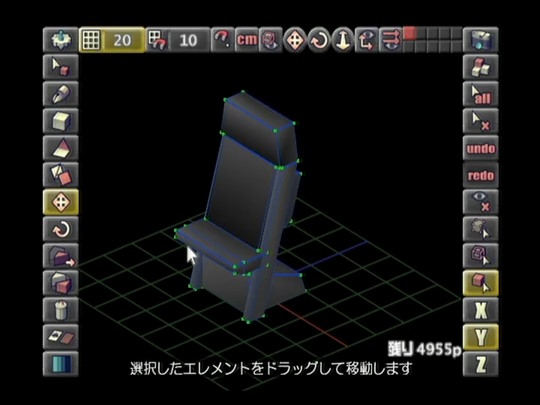
An okay attempt to make a NAOMI Universal Cabinet with the 3D modeler.
Of course, these tools are not like anything we use now. It's rather cool making a whole 3D model on the PS2 and being able to texture it though, no?
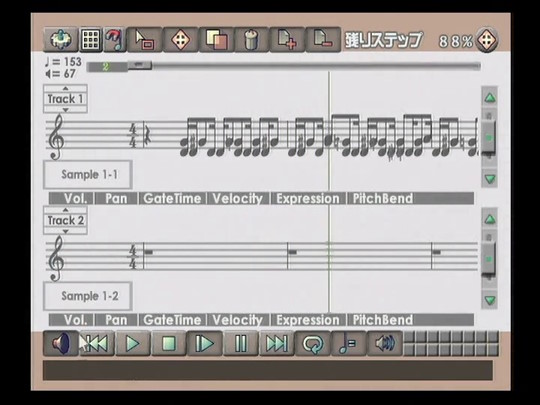
Last is the music tool. I'm not too skilled with music programs, so I'm not able to judge this program sufficiently. Here, you can create MIDI songs or sound effect packs for your games.
There's various instruments you can use to make your music. You can also adjust the mixing and finalize it for your game. Since these songs are all just MIDI, they don't take up as much space as audio streams.
I like this software package a lot. Even if you don't know how to program with BASIC, you would probably have fun playing with the tools.
In June 2001, ARTDINK hosted a contest for programs made in BASIC STUDIO. You would make a program and send in the memory card containing it to ARTDINK for judgement. The top few chosen got cash prizes totalling up to 100,000 yen. They would later announce the winners on their site and distribute the programs on Dengeki demo discs.
Thankfully, the programs were included in the archive discs too, so there is no need to figure out which disc they were in. I copied some of the entries to my memory card but they're huge. The winning program is 4069KB in size!

The winning program is a demo for BEYOND STORY. It's an RPG featuring a 2D overworld and 3D cutscenes and battles. It's pretty cool for a game made in BASIC and deserving of its winning title.
While the game was a demo, I believe the author's team disbanded shortly after the contest had finished and a couple of updates went by. Going to the author's site now shows that they have a programming job! Awesome!

Some of the runnerups: a few interactive 3D demos and a Puyo clone.
Magazines seemed to be the only way programs were transferred officially. The author of the winning prize did upload some of their works on their site in the PSU format as well as links to other people who were uploading their content too. It's neat seeing a small little community coming from this toolkit.
By the way, while we're still on the topic of BASIC. A few months ago, I was trying to show my friends how bad drift got on my Switch Pro Controller, but I realized that video captures were not allowed during stick calibration. To combat this, I made a program in SmileBASIC that was pretty much the same thing with video capturing allowed.
This is 100% me moving my stick and not at all drift...
It's nothing really groundbreaking, but it's better than the tool Nintendo gives. The larger radius of the stick and being able to use both sticks at the same time rule. I also added features that track where the stick goes. I mostly based the tool off the Xbox devkit program for controller testing.
Despite being made months ago, I still need to add stuff like being able to switch between controllers and button testing. I haven't been working on it too much lately but I still use it a lot before a Splatoon sesh, hoping my controller's drift was just a joke. Unfortunately, the drift never leaves my $70 controller.
I debate sending it in for a repair, but I doubt it'll be cheap. I don't even know if I want to since Splatoon 3's update plan is about to end in a few months and I haven't even played it that much this month. The screws are stripped from an attempted repair long ago, so they'll probably get on my ass for that.
Earlier in the month I went to Round1 again. Unfortunately, I wasn't able to play anything since the cabs were always used up, but I didn't really mind. There's not much to talk about because of that.
One thing that was really funny was when a friend was trying to get a free play off DDR, as he never played it on his e-amusement card, but then realized he LOST his card. We were at a restaurant earlier, so he might've dropped it there. Thankfully, he had it linked to his KONAMI ID and transferred it to a new card.
Ah, this month was also Anime Central, or Acen. My friends wanted to go for the rhythm games, which was awesome, but some online friends were selling there, so it was a perfect event to meet them too. I don't have a lot of pictures since I was too busy living in the moment to take any.
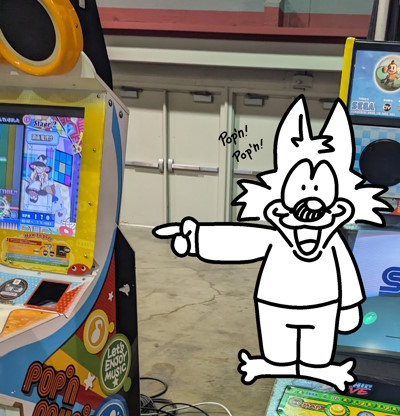
This photo absolutely sucks!
There were a bunch of rhythm arcade cabinets there too. That was the main selling point for me and my friends. It was the first time I played on a HD pop'n music cabinet. It felt awesome and reminded me how much the buttons on my ASC suck.
Nostalgia was there too. I only played it on Konaste with my MIDI keyboard (which I sold a while back) and it was alright with that keyboard. The arcade keys are a tad better, as they didn't dip down that much, but it felt very fragile too. There was a huge problem in that floor though...
One major issue I had with the space was that there was a Dance Maniax machine, but it was running some weird simulator instead. That sucked, but that's not even the worst part. The machine's volume was unbelievably loud! The pop'n music cabinets were right next to it, so you had to lean into the cabinet to even hear the machine in front of you! It was so annoying.
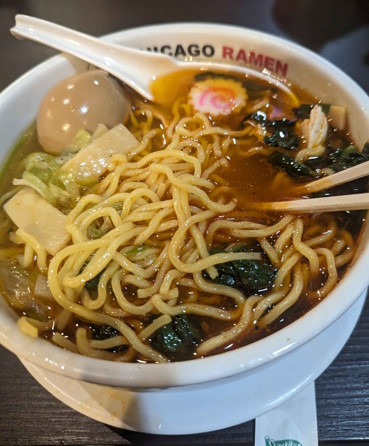
This was the only good photo I got from the entire day...
Afterwards, we went out to get some ramen at a local place. It was pretty packed so we had to wait 40 minutes for a table. It was worth the wait though. I bought the spicy chicken ramen with egg. It was very good, the noodles were thick and the egg tasted very good.
It was a very long day. I left home at 8 in the morning and came back at 1 in the morning. I got on my bed and knocked out instantly. I got almost no sleep the night prior, so I was running on 3 hours of energy that entire day. That's not to mention I had some pretty bad neck pain and I had some crazy hiccups half of the day too.
This month was a pretty awesome month. I only played Splatoon 3 for, like, 10 hours. Most of that was Side Order. I got all of the chips and their badges!